Fruits and vegetables are ripening, grass is curing, flowers are going to seed, and many insects that started as eggs earlier in the year are maturing into their adult forms. What interesting arthropods have you been seeing? We’d love to know!
Submit your bug pictures to bugid@missoulabutterflyhouse.org (and remember to include your name, the date, and the location where you took the photo)!
Header photo: The European Mantis (Mantis religiosa), as you might suspect given its name, is not native to Montana. Each year, gardeners purchase egg cases (called oothecae) with the idea that the emerging mantis nymphs will eat other insects that are bad for their flowers or vegetables. It’s debatable whether they have a beneficial impact since the growing mantises inevitably eat insects that pollinate our plants, too. In addition to the annual introduction by some gardeners, the females will lay two to three oothecae in late summer/early fall, and anecdotal evidence suggests the eggs are surviving our increasingly mild winters. – Bryce Christiaens, August 8, 2025, Rocky Mountain Gardens, Missoula, MT
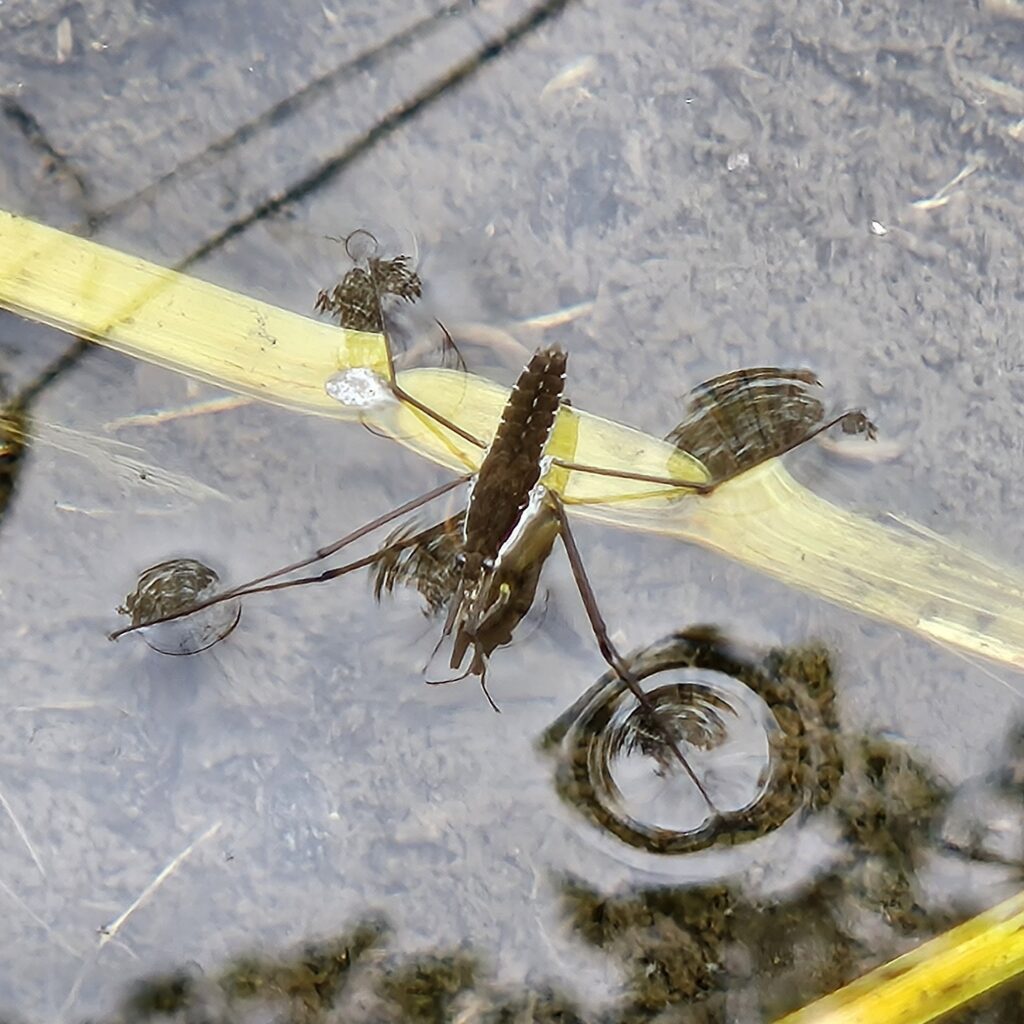
Common Water Strider
Aquarius remigis
Striders are a common sight on ponds, quiet pools in streams, and even in Missoula canals. As true bugs (order Hemiptera), they are predators and highly specialized for life on the water’s surface. These feather-light bugs exploit surface tension to stay afloat, evenly distributing their weight with their long legs, and repelling water with thousands of hydrophobic hairs on their legs and body. Read more in our Notes from the Lab post and come take a closer look at them in our freshwater exhibit area!
Naomi Dulmes, August 5, 2025, Ronan, MT
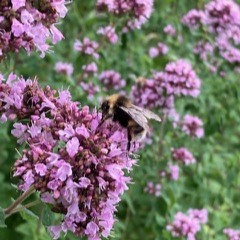
Western Bumble Bee
Bombus occidentalis
Capturing a clear photo of a bumble bee is tricky. Still, we had to include this one because B. occidentalis was once one of the most common bumble bees in western North America, with a geographic range spanning from southern California to Alaska. Unfortunately, in the last decade, their population has dropped by 40%, no doubt accelerated by human impacts and climate change. Seeing one in the wild is a hopeful reminder that they are still around, and with some effort on our part, they will be for good!
LC, August 8, 2025, Hamilton, MT
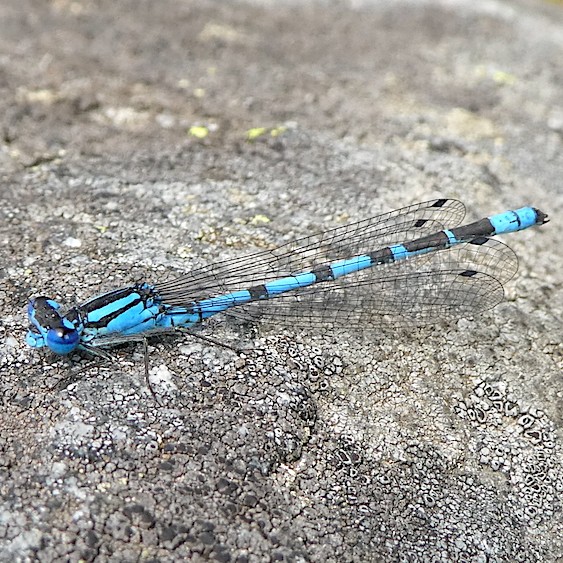
Boreal Bluet
Enallagma boreale
As its name suggests, the Boreal Bluet is a striking blue damselfly. Like all odonates (from the order Odonata, which includes damselflies and dragonflies), it begins its life in an aquatic setting, hunting other insects and even small fish. As an adult, its aerial hunting skills are unparalleled. Odonates were some of the first flying insects and retained their primitive flight muscles, allowing them to move each wing independently. Combined with their gigantic, well-developed eyes, they are formidable predators. The Boreal Bluet is found near slow-moving waters and ponds throughout the western and northern United States and southern Canada.
Glenn Marangelo, August 9, 2025, Selway-Bitterroot Wilderness, MT
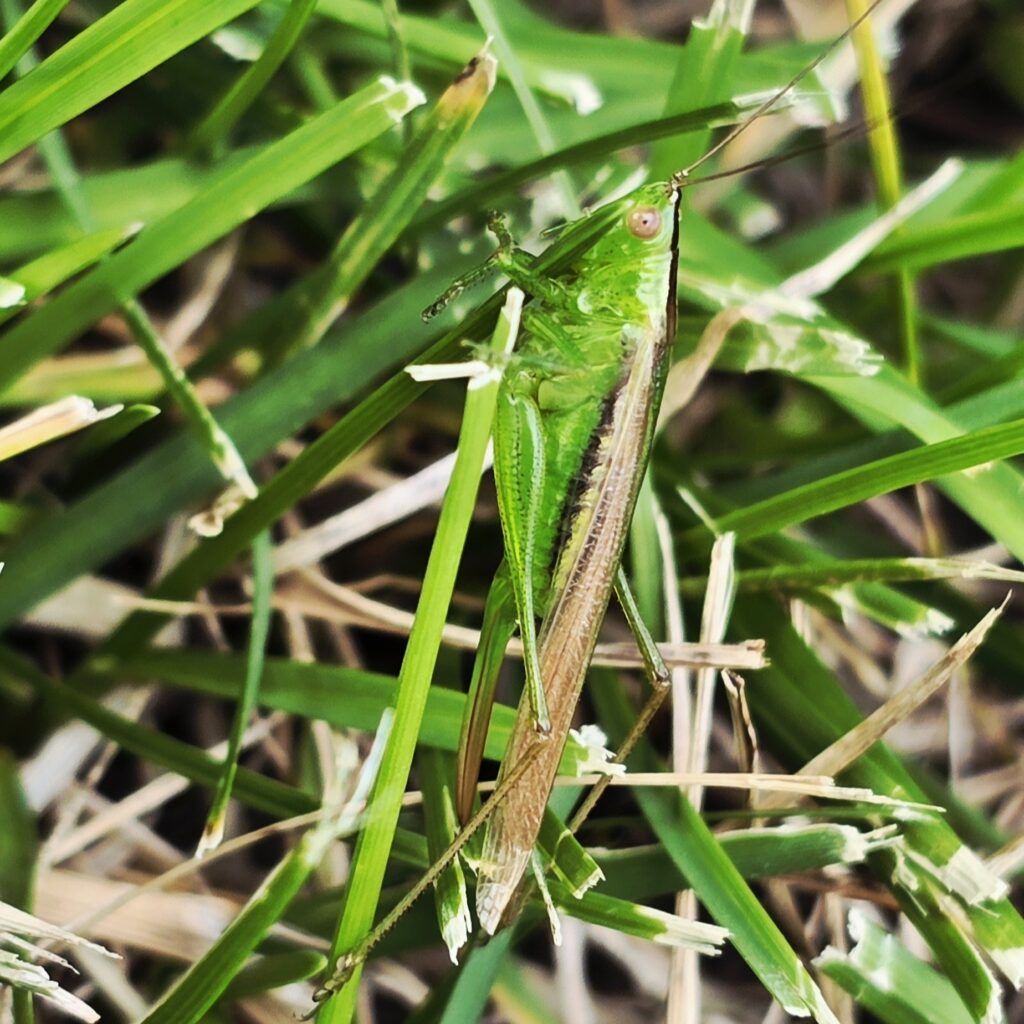
Slender Meadow Katydid
Conocephalus fasciatus
There are three species of Meadow Katydids (genus Conocephalus) found in Montana, but only the Slender Meadow Katydid has wings longer than its body. We know this individual is a female because of the long ovipositor extending from the abdomen. This species feeds mainly on grass flowers and seeds, although it has been observed feeding on small caterpillars and other small insects. One of the earliest katydids to mature – with adult males sometimes forming large singing colonies – it can be found from mid-summer through fall in fields, meadows, and open woodlands throughout the U.S. and southern Canada.
Lisa Cloo, August 9, 2025, Turah, MT
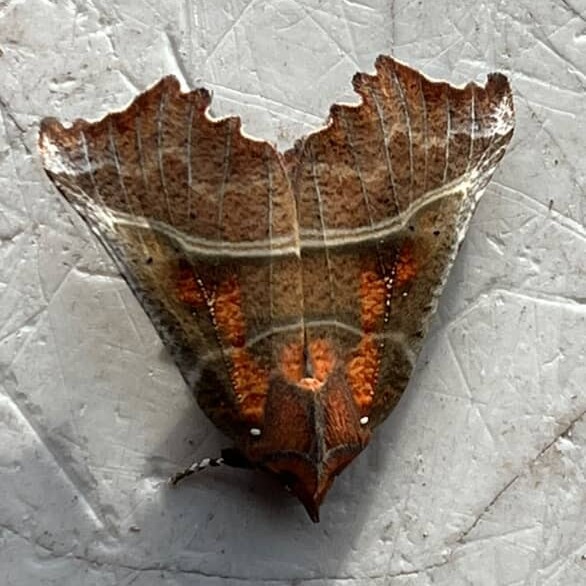
Herald Moth
Scoliopteryx libatrix
This distinctive moth is found throughout North America, Europe, and Asia. Larvae feed on willow (Salix spp.) and poplar (Populus spp.) leaves, while adults feed on ivy (Hedera spp.) blossoms and ripe black- and raspberries (Rubus spp.). Adults overwinter in sheltered cool, dark places like barns, basements, and caves. The Herald Moth was the first insect to be observed using piloerection – the same reflex that gives us goosebumps – as a mechanism for thermoregulation. When it’s cold, the hairs on the moth’s body stand up, creating an extra layer of insulation that saves energy and helps the moth warm up more quickly.
Ross Mathena, August 9, 2025, Hamilton, MT
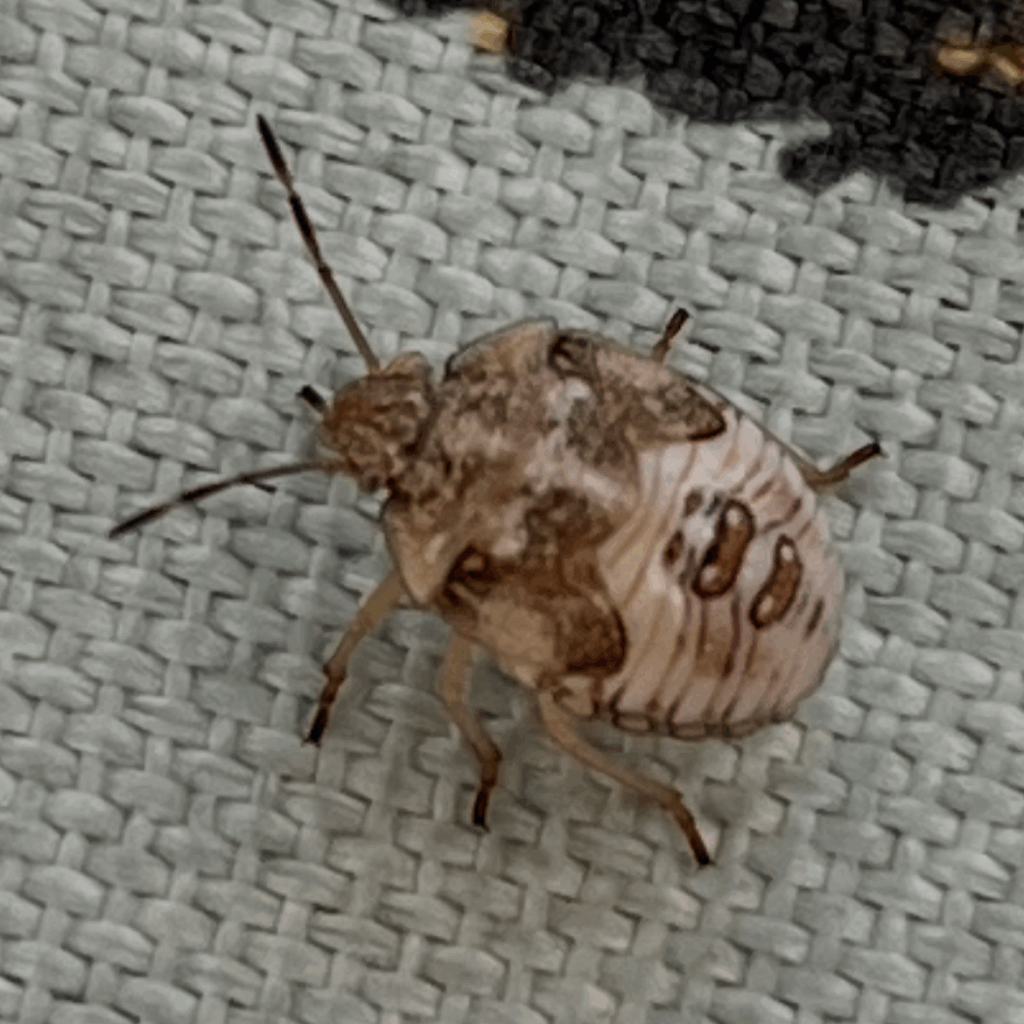
Red-shouldered Stink Bug
Thyanta custator
While we couldn’t find a lot of information about this species, the Red-shouldered Stink Bug is part of the larger group of stink bugs (family Pentatomidae) that can produce a strong, foul odor from glands on their sides. All but the most desperate predators would find them unpalatable. The nymphal form, as in this picture, is boldly patterned, while the adult is more uniformly green or brown, often with reddish accents along the front of its pronotum – i.e., its “shoulders.” Like the majority of stink bugs, this species is an herbivore and is considered a minor pest of crops and ornamental plants. Adults usually overwinter under groundcover or leaf litter, with females laying their barrel-shaped eggs in the spring on the underside of leaves in clusters with tight rows. This species ranges from British Columbia to Maine and southward into Mexico and Central America.
Raelynn Roadhouse, August 10, 2025, Missoula, MT
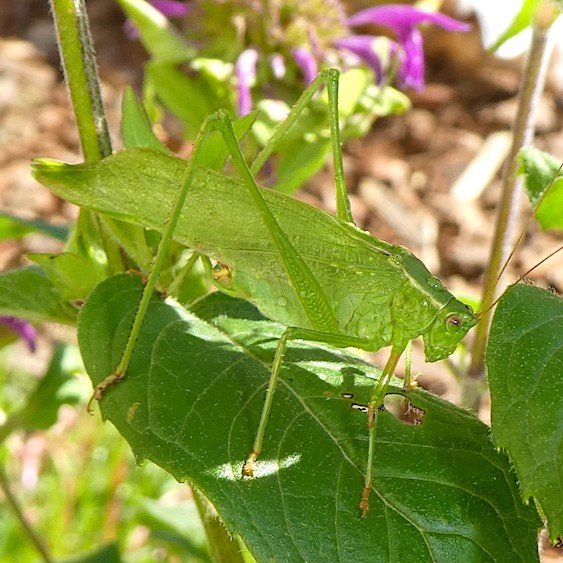
Fork-tailed Bush Katydid
Scudderia furcata
This sizeable katydid (over 2 inches long) can be found throughout most of the U.S. and into southern Canada. It tends to frequent weedy fields, thickets, forest edges, and meadows. While leaf-green is the usual color in the northern portion of its range, its color can range from brown to a bright red and pink color in the south. The adults feed on broad-leaved woody deciduous plants while the nymphs can be found perusing a variety of herbaceous flowers. Adults may be found from early summer into autumn, often dying off around the first hard freeze; meanwhile, their eggs will survive the winter, falling to the ground in the autumn with the leaves they are attached to.
Glenn Marangelo, August 10, 2025, Missoula, MT
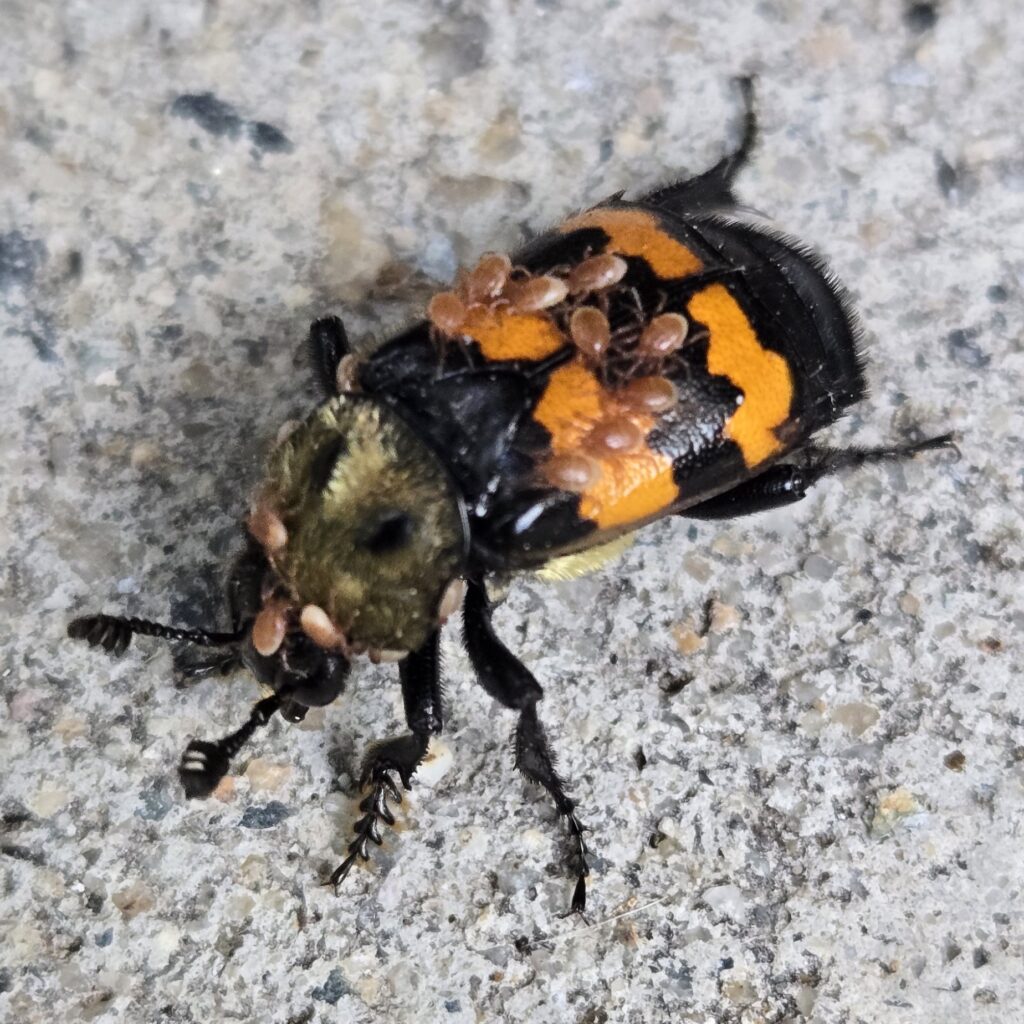
Tomentose Burying Beetle
Nicrophorus tomentosus
The word “tomentose” is a biological term meaning “covered with densely matted filaments,” and refers to the golden hairs, or setae, that cover the pronotum of this species, giving rise to its other common name: Gold-necked Carrion Beetle. As with other burying beetles, this species has highly sensitive antennae containing olfactory organs which it uses to locate carcasses of small vertebrate animals. This beetle demonstrates amazing parental care, with the female laying eggs in soil near the carcass, and then both parents continuing to feed the emerging young regurgitated carrion until the larvae are fully developed. Unlike other burying beetle species, the Tomentose Burying Beetle does not completely bury its carcasses, but instead digs a shallow hole under the carcass and covers it with leaf litter. As pictured here, these beetles often have mites on them that “jump ship” when the beetle finds a carcass. This is an example of a symbiotic relationship where the mites feed on fly eggs that may be on or near the carcass, which would hatch into maggots that would eat the beetle larvae’s food. In turn, the beetle provides the mites with “transportation” to predictable sources of carcasses (and fly eggs) that would otherwise be difficult for them to find.
Judy Halm, August 11, 2025, Helena, MT
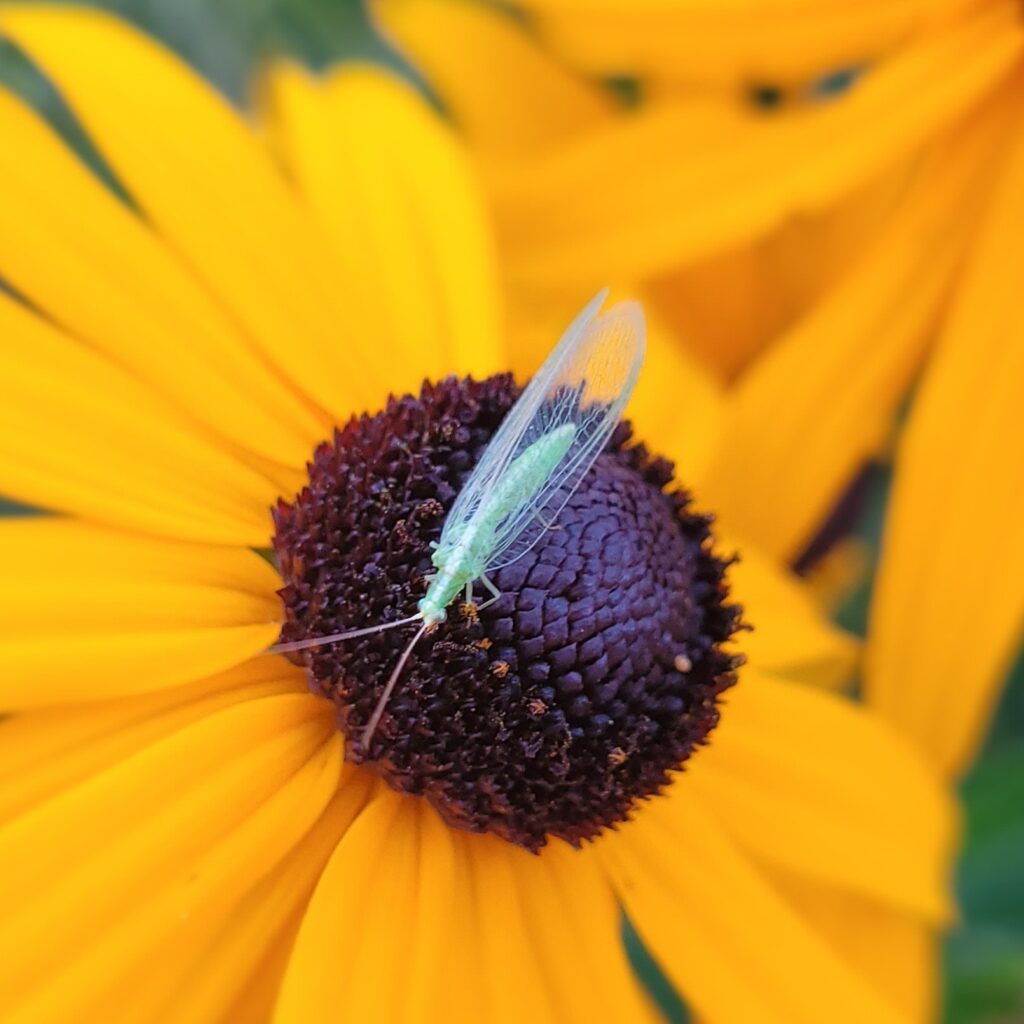
Common Green Lacewing
Chrysoperla sp.
Identifying lacewings to species is extremely difficult because many are nearly identical morphologically. One of the few surefire ways? By listening. Males vibrate their abdomens to produce low-frequency sounds to attract a mate, and the vibrational patterns are unique to each species. Watch a mini-documentary about this unique and fascinating behavior here. Lacewing larvae are predators of aphids; adults feed on pollen, nectar, and aphid honeydew.
Jennifer Wells, August 13, 2025, Orchard Homes, Missoula, MT
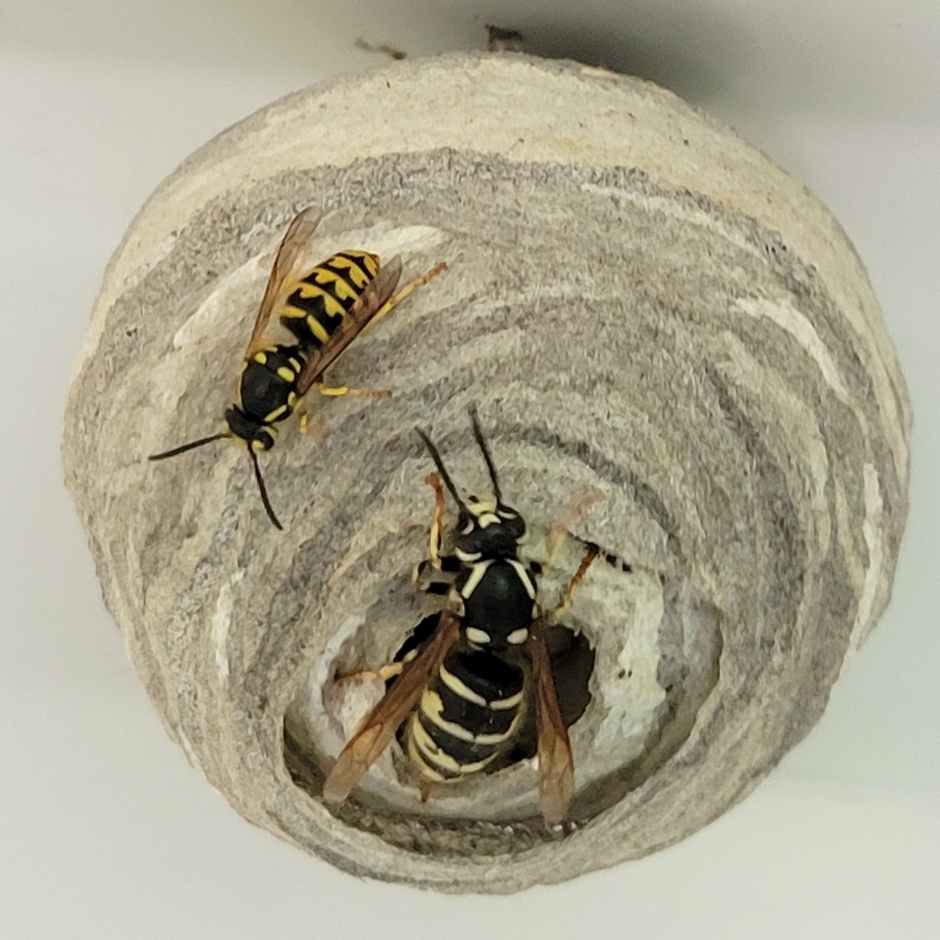
Parasitic Aerial Yellowjacket + Common Aerial Yellowjacket
Dolichovespula arctica + Dolichovespula arenaria
We previously shared this photo back in June, but have since discovered that we mis-identified one of the species pictured. The larger insect with white markings is actually a Parasitic Aerial Yellowjacket (Dolichovespula arctica) and the smaller one is a Common Aerial Yellowjacket (Dolichovespula arenaria). As its name suggests, the Parasitic Aerial Yellowjacket parasitizes the nests of other yellowjacket species: the Common Aerial Yellowjackets build the nest, but then a female Parasitic Aerial Yellowjacket invades the nest, kills the host colony’s queen, and lays eggs for the host workers to rear. Quite a different story than we originally imagined!
Klara Briknarova, June 1, 2025, Missoula, MT